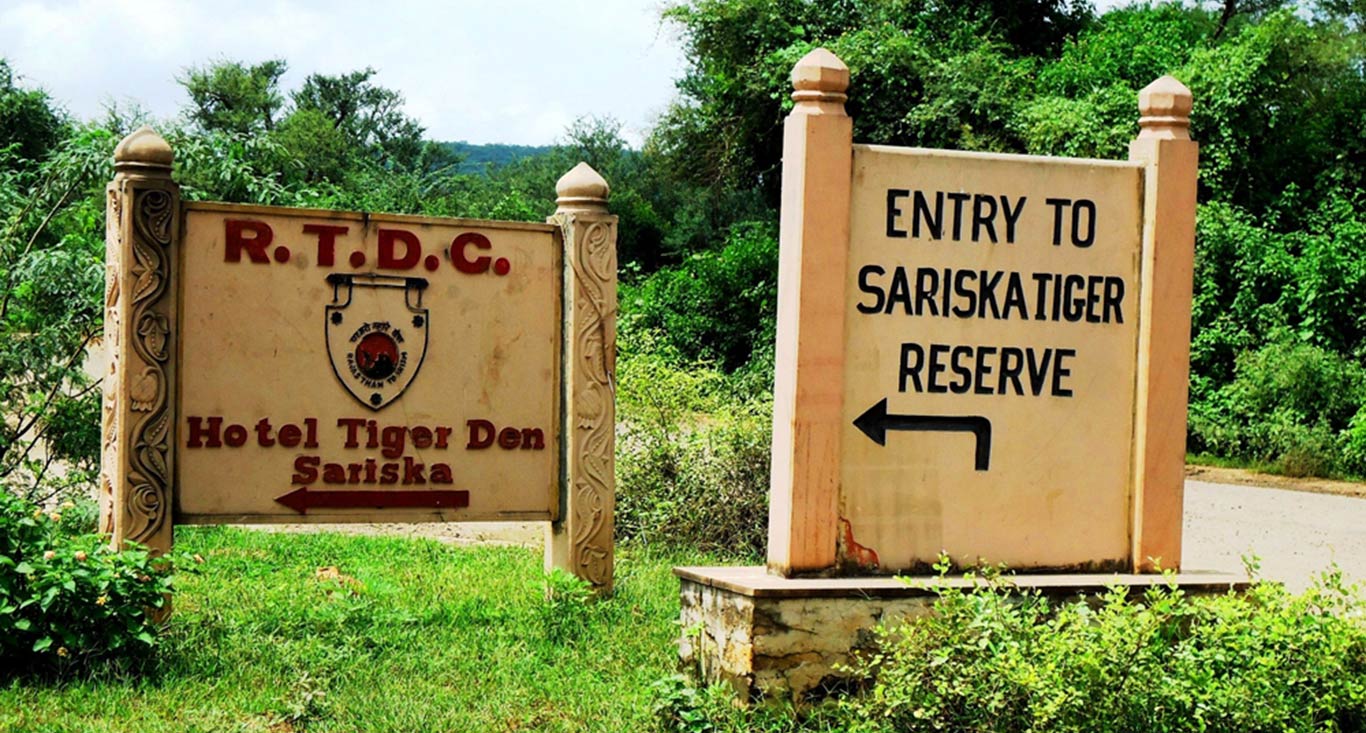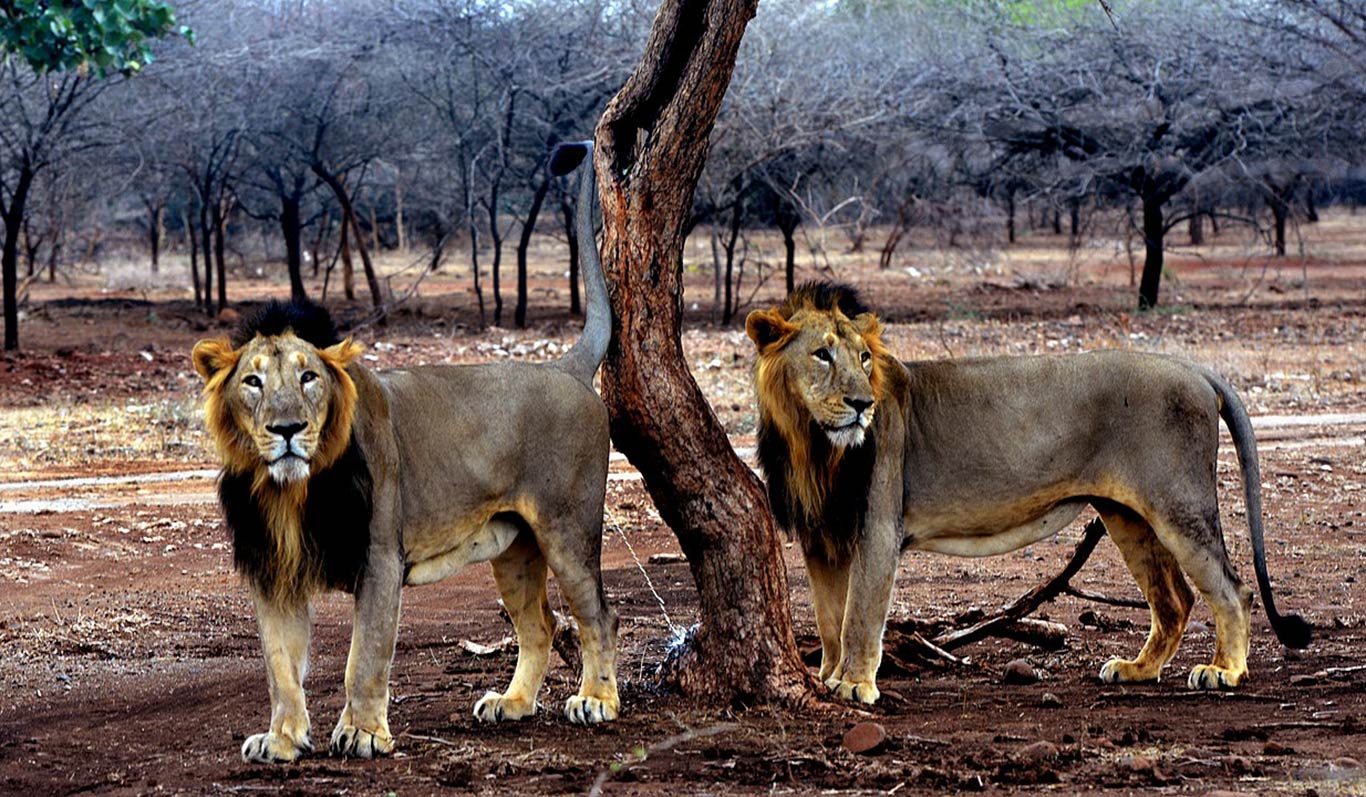Barely an hour’s drive from Bharatpur is the 765 sq kms Sariska Tiger Reserve, once the royal reserve of the Alwar rulers. Sariska is a picturesque park with plenty of nilgai and other deer species. It is the home of carnivores like tigers, leopards, hyena, jungle cat and caracal. In the last few years the dhole or wild dog has been sighted in the Park. But it is not easy to spot a tiger in this park.
However, the 6th to 13th century Neelkanth Temples, 32 kms from the park, and the Kankwari fort, inside the reserve, are added attractions. It was at this historic fort that Emperor Aurangzeb is said to have imprisoned his brother, Dara Shikoh. The palace complex, built in 1902, has been converted into a heritage hotel.
The Sariska Tiger Reserve was declared a national park in 1982 with a total area of about 273.8 km2 (105.7 sq mi).[1] The park is situated 106 km (66 mi) away from Hindaun, 107 km (66 mi) from Jaipur and 200 km (120 mi) from Delhi.
The Sariska Tiger Reserve is a part of the Aravalli Range and rich in mineral resources, such as copper. In spite of the Supreme Court’s 1991 ban on mining in the air area, marble mining continues to threaten the environment. A notable feature of this reserve are its Bengal tigers. It is the first tiger reserve in the world to have successfully relocated tigers.
BEST TIMES TO VISIT(October to June is a good time to visit this Tiger Reserve) :
During Summer : April to July 25 °C – 45 °C
During Monsoon : July to September 19 °C – 34 °C
During Winter : October to March 04 °C – 26 °C

The home for 300 Asiatic lions, Gir National Park is in the south west of the Saurashtra peninsula. The rugged terrain of the park, spread across 1400 sq kms, has steep rocky hill sides covered with mixed deciduous forests. Streams run through the deep ravines and teak, flame of the forest and the banyan provide shelter for the magnificent lions in the height of summer when temperatures soar.
The best time to see the lions is at dawn or dusk when they are on the move. In addition to the lion, Gir has over 200 leopards, numerous cheetal, nilgai, chinkara and wild boar. Marsh crocodiles are often seen along the river banks.
Gujarat has three distinct wildlife features -the Nalsarovar Lake and Sanctuary where a large number of water birds can be seen; the saline flats of the Rann of Kachchh, the home of the Indian wild ass, and the spectacular Flamingo Island taken over by these birds during the nesting season.
In Karnataka, the two attractive wildlife parks of Bandipur and Nagarhole National Park, though separate entities, are part of a larger contiguous wildlife reserve that includes the Madumalai Sanctuary in Tamil Nadu and the Wyanad Reserve in Kerala. Bandipur and Nagarhole are easily accessible from Mysore and the four together form an important conservation area of the Western Ghats called the Nilgiri Biosphere.
The 874 sq kms Bandipur park, which is also a tiger reserve, with its open grasslands and woods, lies to the south of the Kabini river, while Nagarhole, 643 sq kms, lies to the north of the river and has taller trees and denser forests.
A dam on the Kabini and its picturesque reservoir separate the two parks. In this deciduous forest trees reach a height of 30 metres and provide valuable hardwood like teak and rosewood.
Bandipur Park is one of the finest habitats of the Asian elephant. Large herds, with the babies in the centre of the group, almost walking between the legs of their mothers, can be seen quite easily. The magnificent gaur or Indian bison can also be spotted here quite easily.
At Nagarhole too large groups of gaur, elephant, sambar, cheetal, and occasionally a tiger or leopard, can be spotted. Among other mammals are the muntjac, the tiny mouse deer, wild boar, pangolin, giant squirrel, slender loris, langurs and the macaques. Some 250 species of birds have been listed in the park and these include the Malabar Trogan, the Malabar pied hornbill, the Indian great black woodpecker, the Indian pitta and the green, imperial pigeon.

